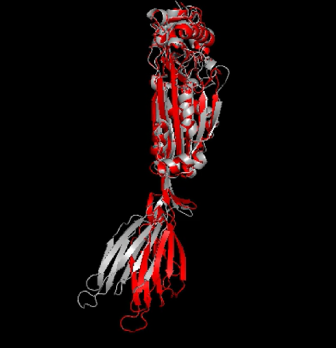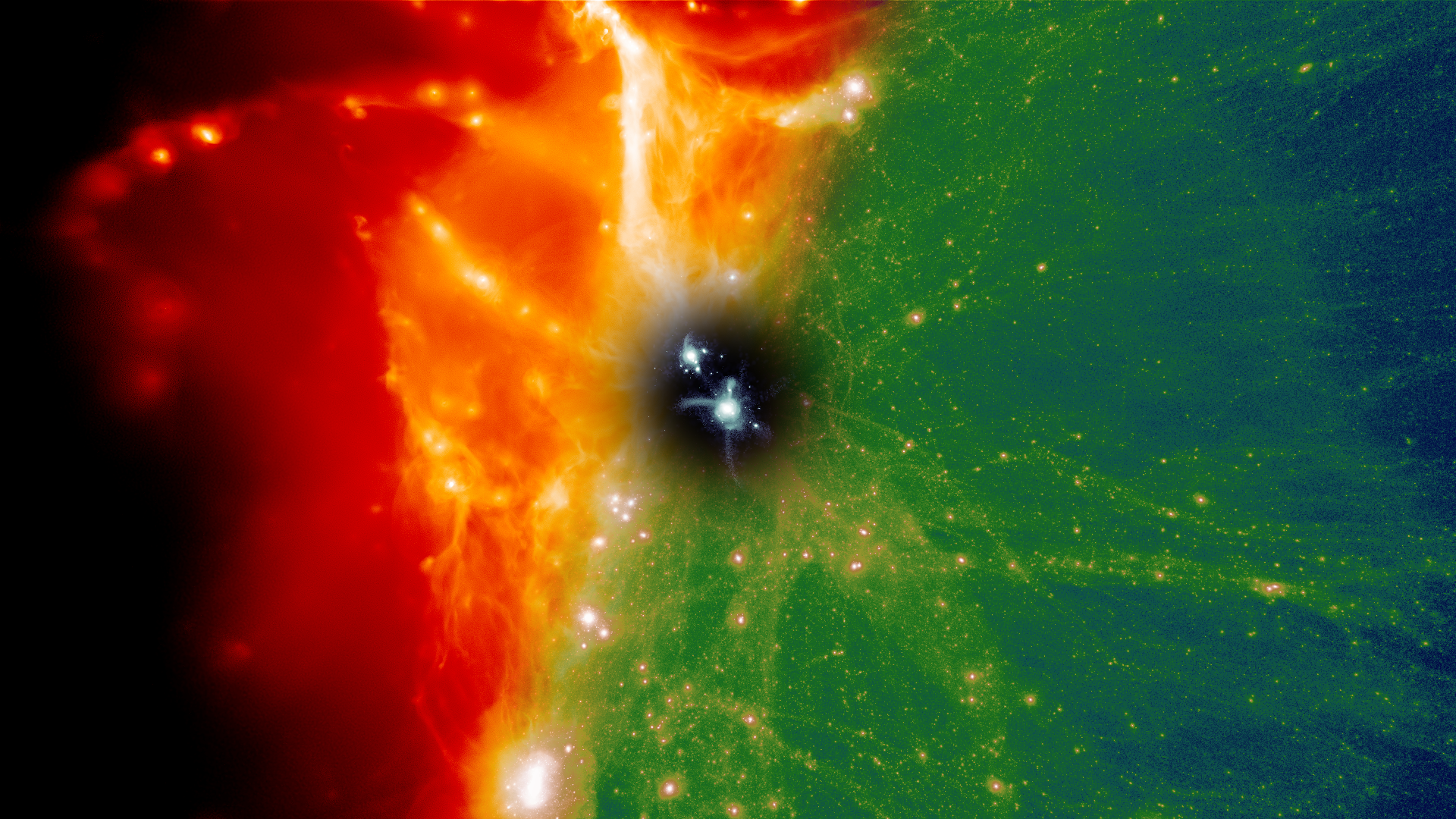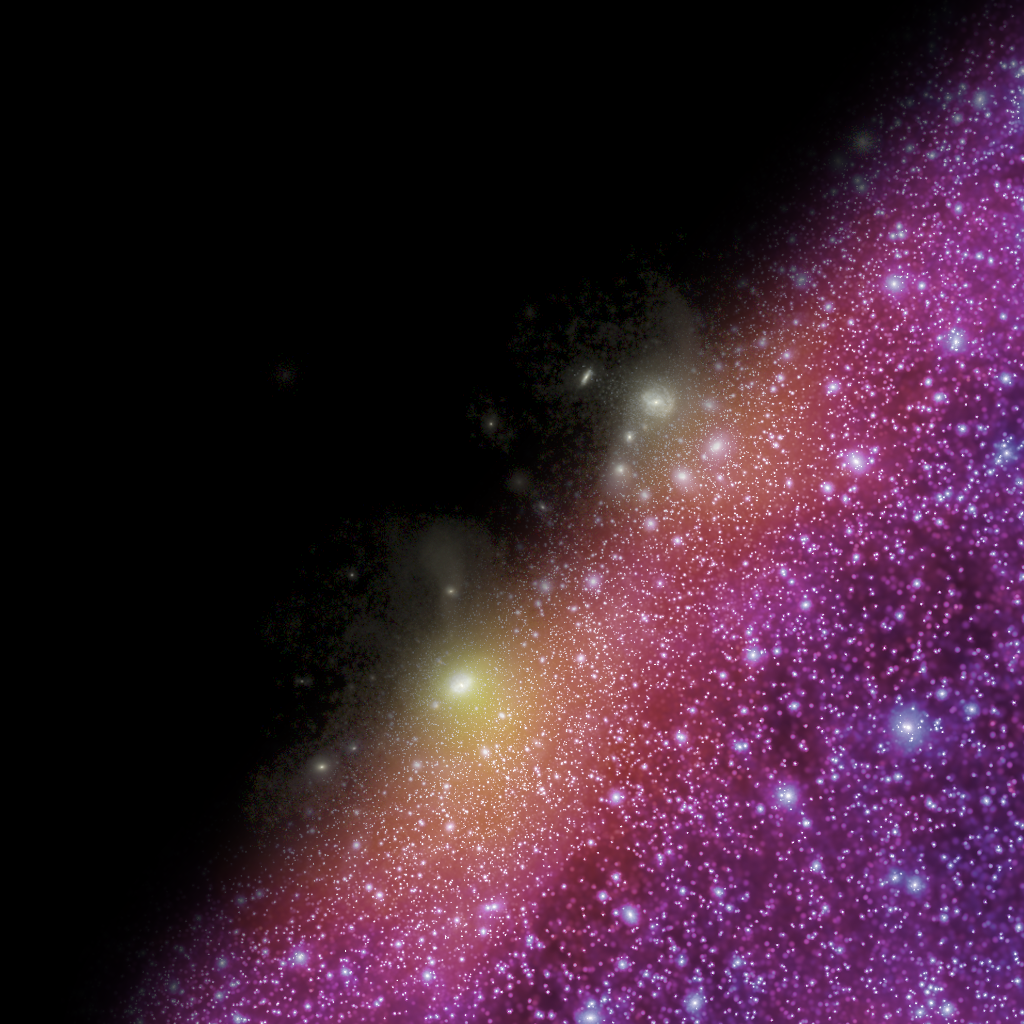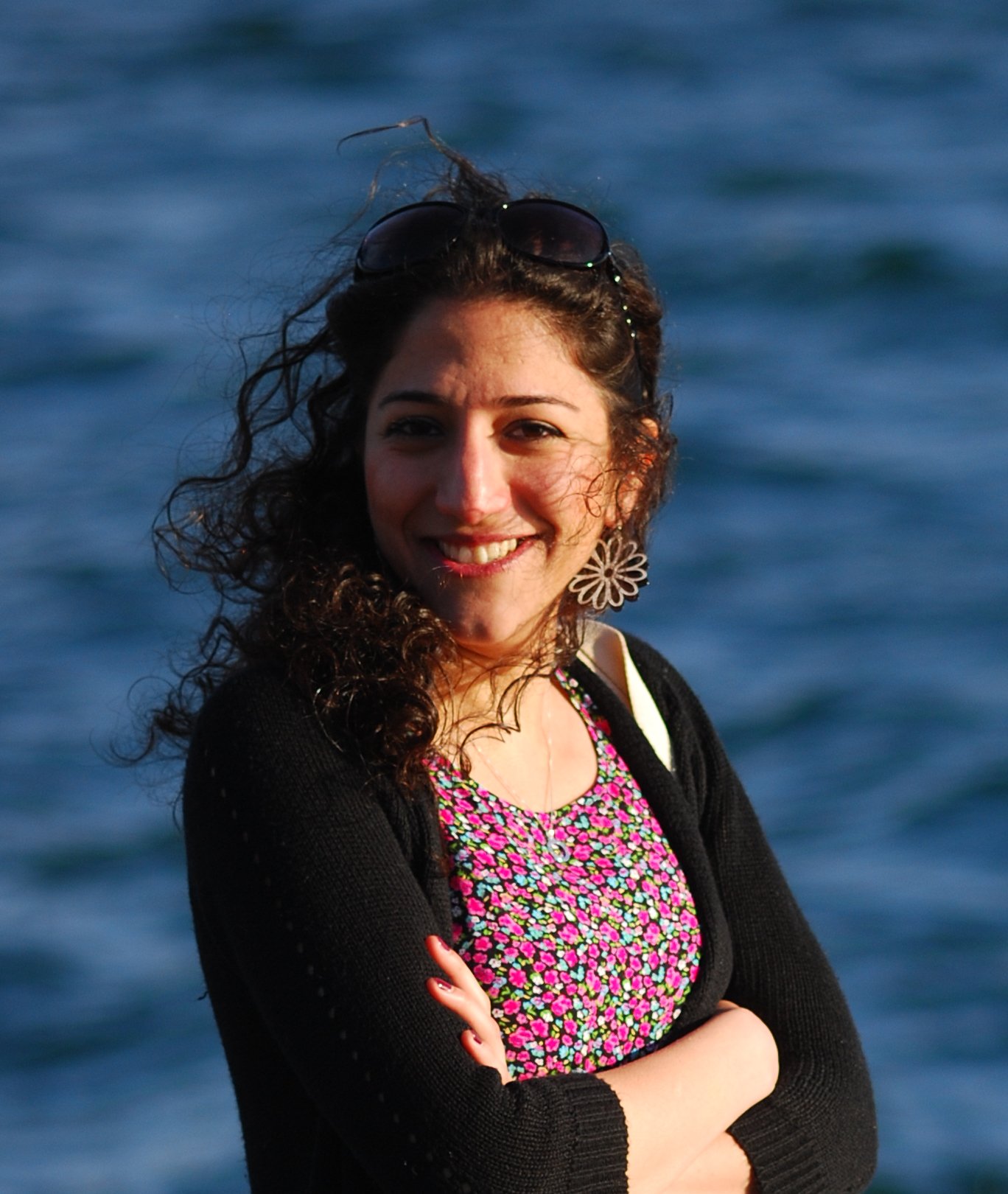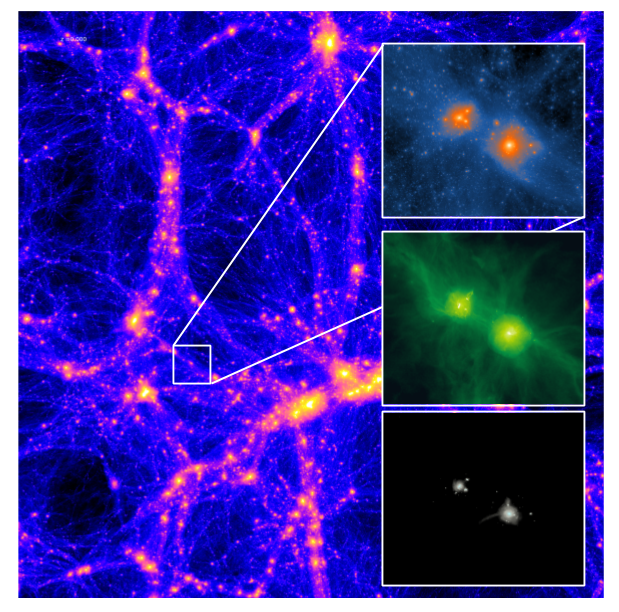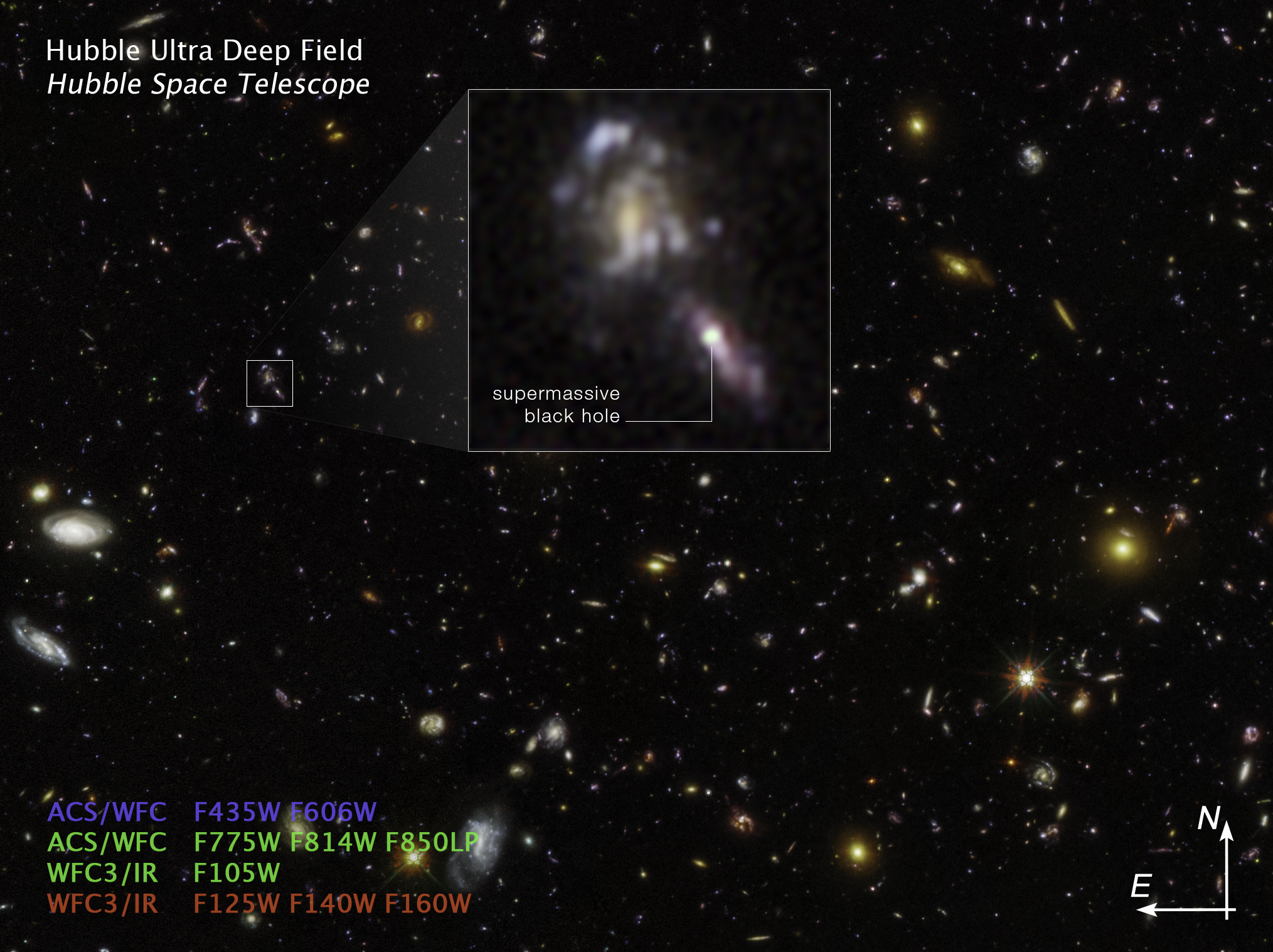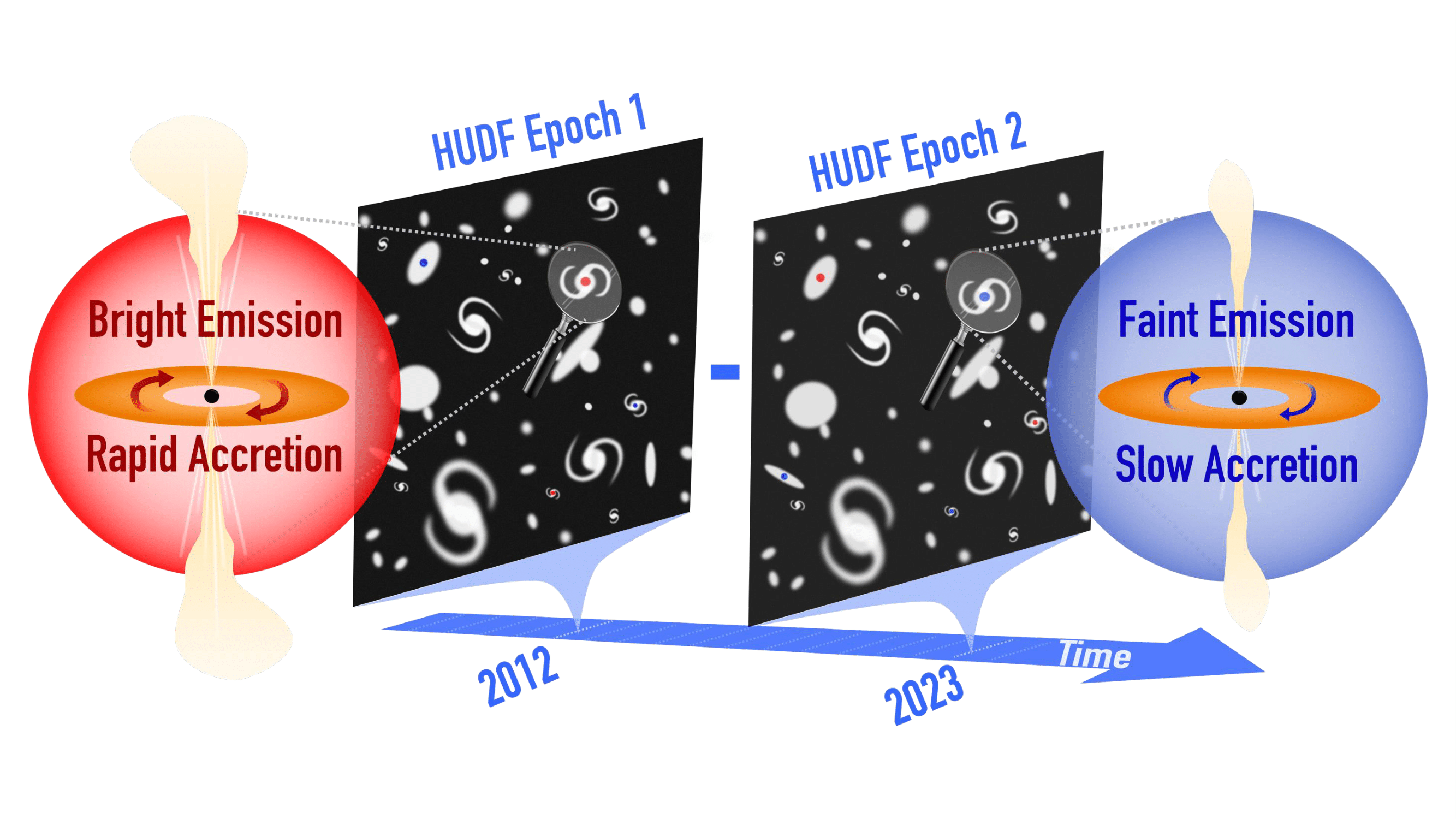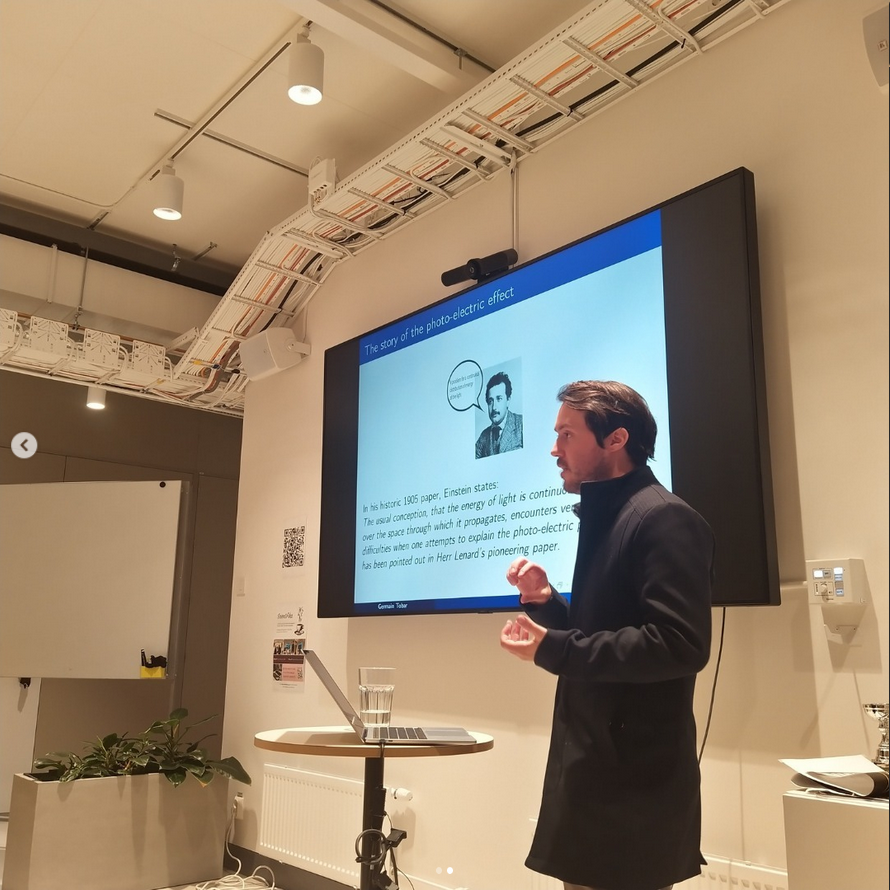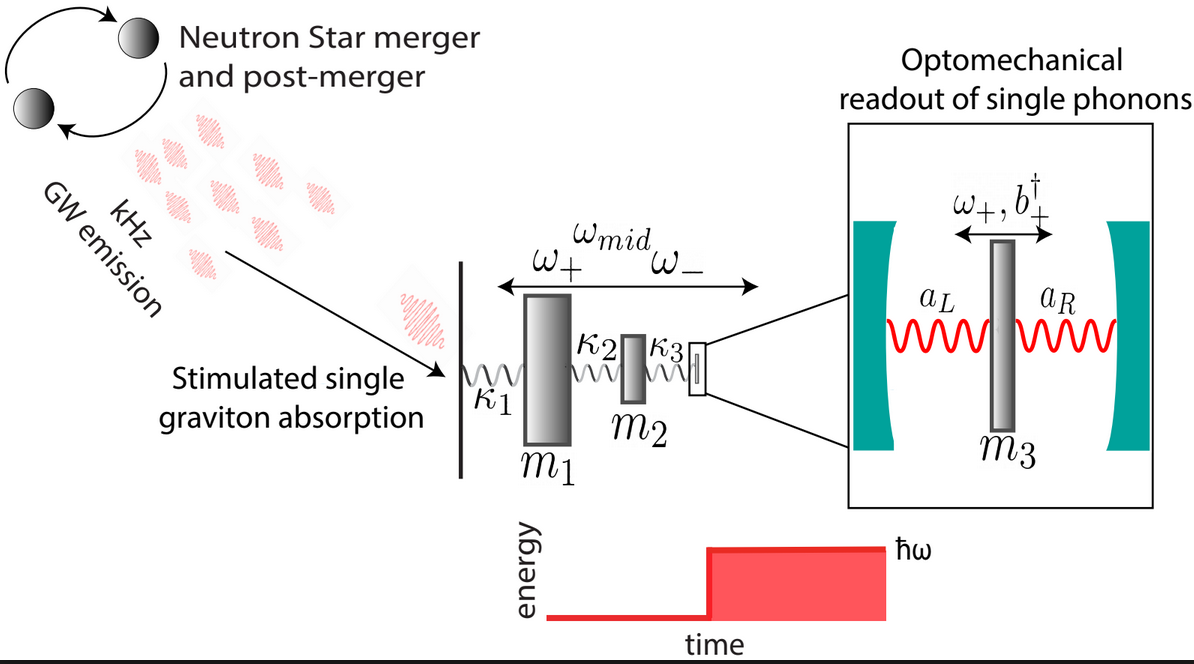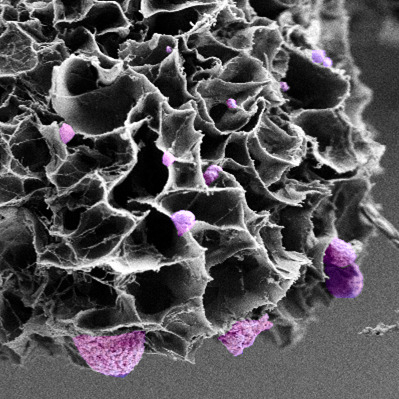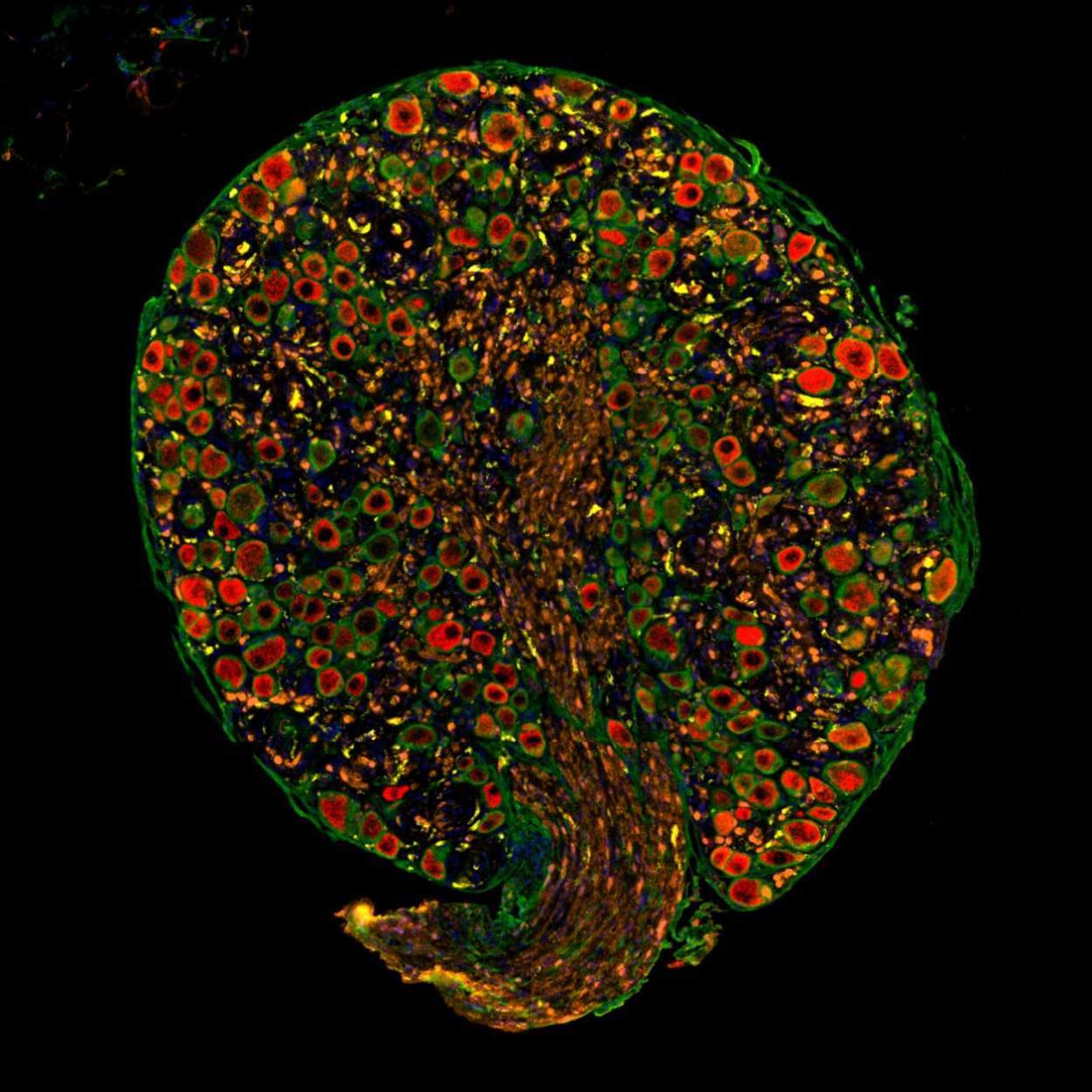Curious about what an academic career looks like? Wondering how to navigate job applications, balance research and teaching, or plan for the future? This week’s ScientiFika features an “Ask-Professors-Anything” session, where a panel of professors will share their experiences, offer insights into academic life, and answer your questions. You’re welcome to ask your questions in person or submit them anonymously via sli.do (code: 3187523)
Modern cosmology has radically transformed humanity’s sense of place in the cosmos. In The View from the Center of the Universe, physicist Joel R. Primack and cultural philosopher Nancy Ellen Abrams present an effort to bridge modern physical cosmology with cultural narratives and broader questions of meaning, identity, and our collective future.
We will examine the book’s central premise: although Earth is not physically at the center of the universe, humans occupy a “central” position in logarithmic size-scale space, are composed of the rarest form of matter in the cosmos, and live at a distinctive moment in the universe’s evolution.
What actually happens inside the brain during a severe infection? In my research, I explore one of the most dangerous infection scenarios: pneumococcal meningitis.
I am Simona Serra, PhD student in Karolinska Institute. My projects focus on fighting antibiotic resistance by the surprising, groundbreaking discovery of a new strong potential drug: AnnexinA1. It shows strong antimicrobial properties against a wide spectrum of bacteria. Another key point of my projects is the investigation on the mechanism of action of Streptococcus pneumoniae’s major weapon: the toxin pneumolysin.
If you are curious to learn more about bacterial biology and new promising strategies to fight bacterial infection, don’t miss next ScietifiFika!

What do vibrating membranes, heat diffusion in a body and the evolution of quantum particles have in common? The mathematics behind them leads to eigenvalue problems for the Laplacian or other differential operators. The mathematical field of spectral geometry is concerned with the question how these eigenvalues are influenced by the underlying geometry (of, e.g., the membrane or the body). This talk is intended to be a gentle introduction to this field. We will pass by famous questions such as “Can one hear the shape of a drum?”.
Early AI researchers focused on games like chess as a proving ground for machine intelligence. In this talk we’ll trace the evolution of chess robots from expert-encoded knowledge to AlphaZero in 2017, which learned chess from scratch in 9 hours of self-play and crushed the best traditional engines. We’ll walk through the key concepts of computer chess including minimax search, alpha-beta pruning, Monte Carlo tree search, and neural networks. We’ll wrap up with how these methods have since been applied to more complex games like poker, Go, and StarCraft.
Although intimately linked to quantum mechanics, superconductivity was for decades understood largely through the classical behavior of macroscopic variables. Only after a long sequence of experiments did its genuinely quantum nature become manifest. This talk traces that transformation from the early studies of superconductivity and the discovery of the Josephson effect to the first observation of macroscopic quantum tunneling of the superconducting phase by Devoret, Martinis, and Clarke, the discovery recognized by the 2025 Nobel Prize in Physics. This pivotal result showed that the superconducting phase, a single parameter representing the collective state of an enormous number of electrons, behaves as a true quantum variable. The talk will then explore how this realization led to circuit quantum electrodynamics (cQED), where superconducting circuits act as artificial atoms coupled to microwave photons, laying the foundations of today’s superconducting quantum technologies.
The semester is in full swing, and you might have questions about academia, job applications, research hurdles, or what lies ahead in your career. The good news? You’re not alone—many around you have faced similar challenges and can share valuable insights. This ScientiFika brings together bachelor’s, master’s, and PhD students, as well as postdocs, to create an open and welcoming space for discussing all aspects of academic life. Whether you’re curious about career paths, want to swap practical tips, or need advice on balancing work and life, this session is all about informal, honest conversations. You can submit questions in advance or ask them anonymously during the event using this form (or visit slido.com with code 5405239). We’re looking forward to an engaging and supportive discussion!
Gravitational lensing is the bending and distortion of light by massive objects like stars and galaxies. In rare cases—strong lensing—it produces multiple images of the same background source. Thanks to wide-field sky surveys and modern discovery methods, more than 1,000 strong lenses are now known. In this talk I’ll present a history of gravitational lensing: early predictions, how Einstein got lucky, how Einstein was wrong, accidental discoveries, and modern telescope efforts. I will focus on one powerful application—time-delay cosmography—showing how differences in arrival times between images allow us to measure the Universe’s expansion rate, addressing the Hubble tension, today’s biggest debate in cosmology.
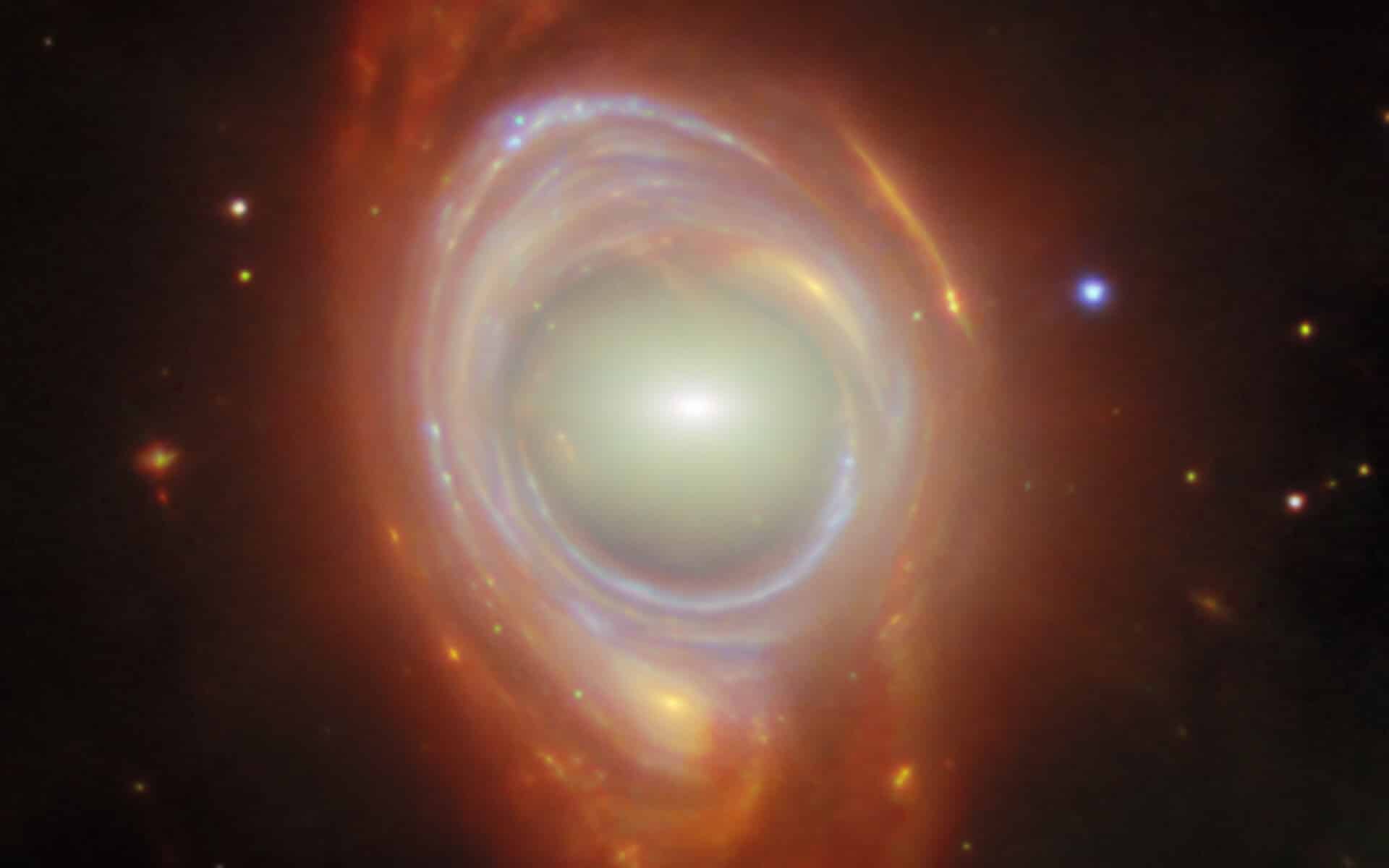
Gravitational lensing is the bending and distortion of light by massive objects like stars and galaxies. In rare cases—strong lensing—it produces multiple images of the same background source. Thanks to wide-field sky surveys and modern discovery methods, more than 1,000 strong lenses are now known. In this talk I’ll present a history of gravitational lensing: early predictions, how Einstein got lucky, how Einstein was wrong, accidental discoveries, and modern telescope efforts. I will focus on one powerful application—time-delay cosmography—showing how differences in arrival times between images allow us to measure the Universe’s expansion rate, addressing the Hubble tension, today’s biggest debate in cosmology.
Image Credit: Rickard L Eriksson
While busy with our daily lives, it’s easy to forget that we’re situated on a rocky planet whizzing through the solar system at 30 kilometers per second, all the while feeling the thug of the Moon and the Sun which deforms the planet and its oceans alike. So what does it actually mean for an organism to not only be a part of a local ecosystem, but a much wider celestial system?
In this talk I’ll take a closer look at some fascinating aspects that link biology to gravity and our immediate celestial surrounding. I’ll discuss how the tides work and how many organisms synchronise their activities to the tides in a way that is still not completely understood. I’ll take a look at microgravity experiments to see how the specific gravity of our planet affect plant growth. I’ll also speculate around some wild ideas concerning the link between biology and gravity. Finally, I’ll try to convince you why it’s imperative that we shoot algae into space.
In this Scientfika talk, I will discuss Einstein’s most cited paper: the EPR argument. I will start with a historic discussion on the exchange between Einstein and Schrödinger, as well as Bohr to shed light on the EPR paradox. From here, I will move to the modern quantum information formulation of the EPR steering effect due to Wiseman et al. and discuss how recent results have found a mathematical equivalence between this puzzling effect and the operational notion of measurement incompatibility.
When Mars Gets Dramatic: Dust Storms and the Shifting Bowshock
Sarah Luga
Everybody knows that Mars is a pretty hostile planet. But once every five years, Mars decides to throw a tantrum and unleashes massive dust storms that cover most of its surface. While the drama is undeniable, these storms are actually fascinating to study because of their impact on Mars’ atmosphere and overall environment.
In this talk, we’ll dive into the planet’s atmosphere and ask ourselves: do these dust storms have an effect on the atmosphere? And if they do, just how significant are they? Featuring: how the absence of an inner magnetic field leads to a shifting ionosphere, statistical analyses, and a strange coordinate system!
Ung Vetenskapssport: Engaging the Next Generation in Science
Emma Jotun & Gabriel Bergens
Ung Vetenskapssport is a student-led nonprofit that creates opportunities for curious young people to explore science through camps, competitions, and creative problem solving. One of our goals is creating community through a shared interest in science.
One of our upcoming projects is Physics and Astronomy Camp for high school students with a strong interest in science. The camp is filled with lectures, lab sessions, and collaborative challenges designed to inspire and engage. At our camps student get a chance to learn interesting math and physics, practice problem solving and make lots of new friends through a shared love of physics!
In our talk we will talk more about what we do and how you can get involved!

Is our universe similar to a hologram? This is what is suggested by holography — the idea that gravitational theories may be described by theories on a lower-dimensional boundary, much like a hologram encodes a 3D image on a 2D surface. Let me take you on a short journey through this exciting topic, from the origins of the holographic principle to the dualities that connect gravity and quantum physics, ultimately giving you a glimpse into how holography can be used to study strongly coupled systems in particle physics — something I had the pleasure of exploring over the past year during my master’s thesis work at SU.
What is the relation between art and science? How do they benefit from each other? Join me in this fun journey through some science and some art! In this ScientiFika I will first talk about the science I do, that is, how we can use weak gravitational lensing to learn about dark energy. Then, I will describe my journey through publishing Chicago in Color, a photography book with a minimalist and colorful style that especially highlights disfavored areas from Chicago. Finally, I will give my thoughts on the relationship between art and science and future directions I am thinking about.
Generative AI has revolutionized how we model and synthesize data, powering applications such as realistic image and video generation. Yet, its foundations trace back to classical statistical methods. In this talk, we begin with a brief exploration of the evolution of generative modeling, from traditional probabilistic techniques to modern approaches like variational autoencoders and diffusion models. Beyond data generation, these models play a crucial role in learning and forecasting complex dynamical systems, with applications in physics, engineering, and beyond. We will discuss the surprising connection between optimal transport and a thought experiment of Schrödinger, and present a principled framework for probabilistic forecasting of complex dynamical systems. No deep mathematical background required—just an appreciation for probability, AI, and the art of modeling complex systems!
The planet Earth is approaching the end of the Holocene, human resource consumption and emissions are an increasingly large share of global biogeochemical cycles and it seems our capacity to take decisive action is seriously limited by a rapidly fragmenting information ecosystem. Where once we were limited by a lack of information, we are increasingly crippled by an overabundance of information with no clear indication of quality. In this presentation I will attempt to connect the twin crises of knowledge and sustainability. I will take a trip through some of earth’s greatest hits to contextualize the current moment in earth history. Then I will take a closer look at the challenges we face today in creating a system of production and consumption within planetary and ethical boundaries. I will then introduce my own research into organic waste treatment, resource recovery, and systems assessments for emerging waste management systems. I will finish with a brief history of scientific knowledge, why the state of science today reflects our society’s information ecosystem, and how both might be improved by a little humility.
FysikShow is a collaborative outreach project from Stockholm University with the aim of raising interest in natural science and research. FysikShow, consisting of a team of 8 PhD students, comes to schools and participates in various science events. We think it is both important and fun to use experiments to understand physics. Therefore, we show experiments to students and work interactively with explanations of the physical background. The school’s slightly more formal physics language is thus brought closer to everyday life and the students’ own experiences. We believe this is important for the students’ curiosity and to show them joy in understanding their own surroundings. This Friday we will tell you more about FysikShow and show you some of our favourite experiments!
A practical guide to Bees and their keeping
(Michael Hrywniak)
Bees first diverged from wasps approximately 130 million years ago, shortly after the appearance of flowers during the early to mid Cretaceous period. Today, bees are found on every continent on Earth save Antarctica, with over 20’000 known species. The best known of these is the western honey bee, Apis Mellifera, which lives in large eusocial colonies, exhibiting some of the most complex social structures and behavioural patterns in the animal kingdom.
How is it, then, that an industrious human can usurp these social structures and bend them to their advantage? In this talk I will give a practical guide to the honey bee; a brief overview of their social life, a beehive’s lifecycle over one season, and some insight into modern beekeeping practices.
Where is the “I” in physics? And should we care?
(Will Benston)
We as physicists try to describe the world in an objective and impersonal perspective, without any discussion of experience or consciousness. This has made physics and science very effective in the past, but have we reached the limit of the usefulness of this approximation? We will discuss how a successful theory of quantum gravity might need to say something about what we are and how we interact with the universe. We will talk about how we measure observables and experience time in quantum gravity. Be ready to walk the beautifully wonderful line between crackpottery, philosophy and the foundations of physics as we talk about the “I” in physics!
To combat climate change and pollution, energy production is shifting towards renewables. However, many of the leading technologies, notably solar and wind power, are very variable. This poses challenges to the stability of the power grid, as well as uncertainty that can dampen investments in renewables. Flower was founded in Stockholm in 2020 to address these challenges and now sports 140 employees. We are active in three countries and expanding to six others. I will introduce what we do and also touch on my role as a data engineer, including how I transitioned into it after my postdoc at SU.
Imagine trying to follow two voices in a crowded room—your brain naturally separates them, but what if you had to do it mathematically? This is exactly the challenge we face with X-ray pulsars. These cosmic lighthouses beam powerful X-rays into space as they spin, but their light doesn’t come from just one source—it comes from two magnetic poles, blending together in a way that’s almost impossible to untangle.
In this talk, I’ll take you on a journey through the strange world of X-ray pulsars, showing how we observe their flickering light and why their pulse profiles hold hidden secrets. The big mystery? We still don’t know exactly how each pole contributes to what we see. Enter blind source separation—a clever mathematical trick inspired by the “cocktail party problem,” where we try to isolate individual signals from a messy mix. I’ll explain how this technique can help us decode pulsar emission, what its limitations are, and what we’ve learned from applying it to the pulsar Cen X-3.
By the end, you’ll see why these rapidly spinning neutron stars remain one of the most intriguing puzzles in astrophysics—and why solving them is far from simple.

Accurate projections of mass loss from the Antarctic Ice Sheet depend on precise modelling of ice flow. Ice flow is routinely modelled as a non-Newtonian fluid using a power law called Glen’s flow law, but this approach neglects the inherent direction-dependent viscosity of ice. This simplification leads to a discretised ice-sheet model that is both computationally efficient and numerically stable, capable of modelling entire ice sheets. However, model intercomparison projects have revealed large discrepancies between ice-sheet models and uncertainty in future sea level projections. In this talk, I will present an overview of model developments in the area of anisotropic ice-flow modelling, an alternative to Glen’s flow law that accounts for the evolution of the crystal orientation of ice, offering a more accurate representation of ice dynamics. I will present 3D simulations of coastal regions of Antarctica, comparing modelled crystal orientation with observations of ice crystal structure obtained from quad-polarimetric radar data.

Scandinavian peoples have been skiing for thousands of years; today more than 50 million people worldwide enjoy recreational skiing. Skiing, combining high speeds with snow’s unique properties, offers an excellent venue to demonstrate physical principles. In this talk we’ll discuss the physics that underlies every aspect of the sport, from the dynamics of turns and the material properties of composite skis, to the terrifying power of avalanches.

As the saying goes, you are what you eat. While humans don’t literally transform into their food, some animals are adept at kleptoplasty — the incredible ability to extract and utilize functional organelles from their prey. These creatures aren’t world-eating aliens; they live in the ocean and rarely exceed a few centimeters in length! Meet the remarkable sea slugs. Dive with me into their wonderful world, where eating algae enables photosynthesis and preying on jellyfish bestows a deadly sting.
Do you have burning questions about the world of academia? Are you unsure how to approach job applications and wonder what academic life will look like a few years down the line? Let’s ask the people who navigated this landscape successfully and obtained a permanent position! In this week’s ScientiFika event, a panel of professors will answer your questions and talk about their personal experiences in academia. Important: You may ask questions in person or via https://app.sli.do/event/phkphqW8erVsabv2aFp5hD (or visit slido.com with code 3187523).

Us: Science, of course.
World: But what does that even mean?
Us: Ah, we are investigating what things out there in the world are doing.
World: But what things?
Me: Well, personally, I am constantly hassling with wavevectors in Quantum Mechanics or exotic fluids such as dark energy.
World: That’s cool, but how do we know these things are real? Do we actually see them? Do you touch them?
Me: Hmm, not really…
Us: So how do we know they are actually a THING?
Me: Maybe because they seem to work just fine?
World: There has been plenty of so-called THINGS in the history of science that no longer are a THING though… and folks back then thought they also worked just fine!
Me: Right, right…
– And then Us all sit in contemplation during the ScientiFika and start to wonder how to make sense of this all, while the World keep a judgy eye on us.
***
Come and join us for a quick walk on the Philosophy of Science!

Every time that we have looked further into the Universe, we have found fascinating surprises. Most notably, we observe that an omnipresent dark energy drives the Universe to expand ever faster, and that its large-scale structures hold together only because of an invisible dark matter. We do not fully understand how cosmic structures form, and even if our laws of gravity are valid at all scales. Gravitational waves (GWs) – ripples in space and time produced by extreme gravitational systems in the cosmos such as binary black holes – offer a unique opportunity to answer these fundamental open questions.
To finish the term, it is our pleasure to invite you all to our special Christmas themed ScientiFika on Friday 13th December, where we will be moving from Nordita to the Restaurant Proviant in Albano Hus 2.
When: Friday, December 13th, 16:30
Where: Albano Hus 2, Restaurant Proviant -> Near the stage
Address: Albanovägen 24
You can expect a special programme, slightly different from what you are used to, which will also include a special Christmas Fika in the form of finger foods with mulled wine! Outside of the chance to mingle with your fellow students and researchers, the event will include a special Bingo and also a GONG SHOW. This will be a series of short (2 minutes) talks given mainly by students, where you will have the option to shortly present what you worked on or are working on at the moment, be it a Bachelor/Master thesis, interesting project during an internship or anything else you’d like to share. It will give you the opportunity to practice talking about your topic in front of an audience and also to take on the challenge to do so in 2 minutes! (Note that the GONG SHOW is also available to PhD students, but Bachelor/Master students will get priority in case there is not enough places)
If you want to join us at this event, please fill out this form. There, you can also sign up for the GONG SHOW (places are limited so don’t wait!)
Our senses are constantly bombarded with external cues, such as people’s facial expressions, words, and behaviours, along with internal bodily signals like touch from others, our perception of our body’s position in space, and our intrinsic sense of self. Understanding how the brain transforms sensory information into complex perceptions and generates subjective experience remains one of the most profound unresolved questions in philosophy of mind, psychology, and cognitive and brain sciences. In this talk, I will explore the approaches neuroscience has developed to experimentally address these questions, examining both traditional methods and newer, innovative techniques that deepen our insight into the brain mechanisms behind conscious awareness. I will highlight cases of visual consciousness, focusing on the perception of complex social information in human faces, and bodily awareness, specifically the feeling of body ownership. Additionally, I will discuss the extent to which we process information unconsciously and how advances in the neuroscience of consciousness may improve our understanding of neuropsychiatric disorders.
Have you ever struggled to disentangle your headphones or untie your laces? Are you a sailor and a master of sailing knots, or do you enjoy the art of knitting? If any of these sound familiar, you have (perhaps unknowingly) done knot theory at some point in your life. The concept of ‘‘knottedness’’ has intrigued humanity for centuries and has captivated mathematicians since at least the 18th century. Some fascinating pieces of math have been developed within knot theory throughout the centuries. Knots appear to be such natural objects that they are ubiquitous in science, even beyond daily life experiences: chemistry, materials science, hydrodynamics, electrodynamics. Apart from exhibiting all of these exciting occurrences, I will explain what knots have to do with quantum field theory and how this profound connection benefits both physics and mathematics.
Simple question: What is the Universe really made of? Yet, not-so-simple answer: Mostly stuff we can’t see! Join me on an astronomical journey into the mysterious world of “dark matter,” where we will explore how we use gamma rays—the most energetic bursts of light—to hunt for clues of dark matter. In this talk, I will outline the path from early gamma-ray astrophysical observations to today’s most sensitive gamma-ray missions, like the Fermi Gamma-ray Space Telescope, and look ahead to the next big leap: the Cherenkov Telescope Array. Along the way, we will encounter exotic particles like axions or WIMPs that could help us finally unlock the nature of the Universe.
In this talk, I will draw on my experience as a clinical radiotherapy physicist to present on how we use physics to fight cancer (and how it can sometimes feel like the physics is fighting back). I will give a brief summary of the history of radiotherapy, its current application in clinical practice, the physics underpinning the most common form of radiotherapy, and an overview of current areas of research and development within radiotherapy physics.
🎃🎃🎃For Halloween, we present not one, not two, but three very scary talks!👻👻👻
Spooky Singularities: Revealing Supermassive Black Holes in the Early Universe
Alice Young
Although supermassive black holes (SMBHs) reside in the nuclei of most massive galaxies and are understood to contribute to galaxy formation in a multitude of ways, the origin of SMBHs in the early universe is one of the remaining questions in modern astrophysics.
In this talk I will discuss some of the theoretical formation scenarios that have been proposed and how astronomers can begin to test the predications of these models using observational data. In particular, I will present our recent re-imaging campaign of the Hubble Ultra Deep Field (HUDF) as well as the detection methods which have yielded the highest number density of SMBHs within the first billion years after the Big Bang reported to date.
🦇🦇🦇
Liliana Ferreira
Between the two 20 minutes talks, we will have a smaller 10 minute interlude about bats 🦇.
Spooky Food
Marjorie Ladd Parada
In the scariest month of the year, I present you with spooky food, food that can kill you, make you sick, or that simply looks like you should not be eating it. In fact, if time allows, I will speak a bit about the spookiest food of all, that which is so bad that you will not it eat even if it is the only thing around, just like in the first manned missions in space, where the food was so bad that the astronauts preferred to stay hungry, and how space food has changed food as we know it.
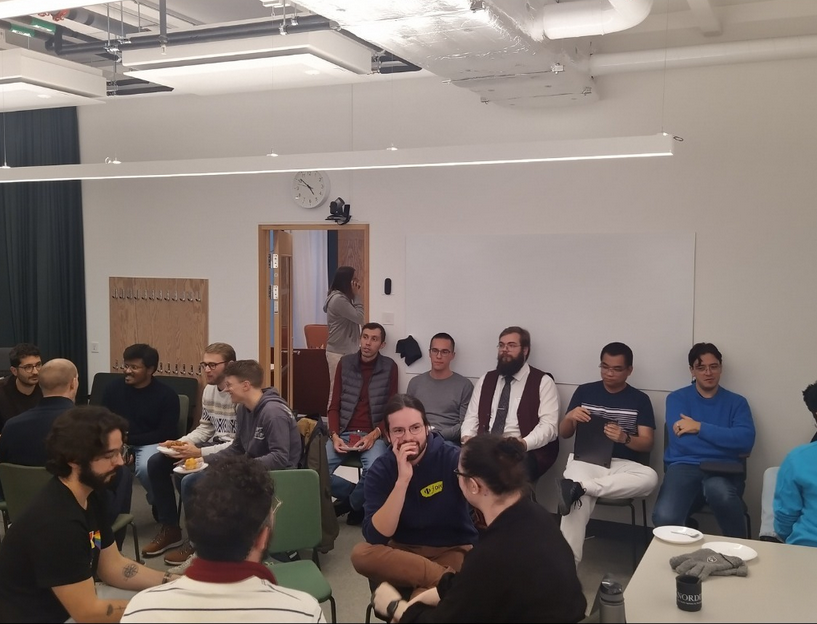
The semester is well-underway and you may have burning questions about academia, job applications, research challenges, or the path ahead. The good news? Others around you have been through similar situations and can offer valuable insights. At this ScientiFika, we bring together a diverse group of bachelor, master, and PhD students, as well as postdocs, creating a unique space to ask and answer questions about academic life. Whether you want to discuss career paths, share tips, or get advice on balancing work and life, this session is designed for open, informal discussions.
The detection of single gravitons (a quantum of gravity, like the photon for electromagnetism) is commonly told to be a near impossible task, but to what extent is this true? In this talk, I will discuss how a gravitational version of the historic photo-electric effect can be implemented with modified gravitational wave detectors, such an experiment would correspond to a single graviton detection process, and in analogy with the photo-electric effect for photons, provide the first evidence of the existence of the graviton.
We all talk about the importance of multidisciplinary teams for tackling our greatest health challenges. Yet, I have found that as someone rooted in a technical discipline (mechanical engineering), this is often defined as bringing together an electrical engineer with say a physicist and chemist. For this talk, I will share with you my journey as an engineer in a clinically driven environment. As part of this talk, I will share vignettes of my research, spanning from the development of microfluidic technologies to isolate the rarest particles in blood, to seeking ways to extend the life of human organs. I will highlight voices that I now see as critical to my own research, including ethicists, regulatory specialists and patients themselves, while sharing areas of opportunity for early career scientists.
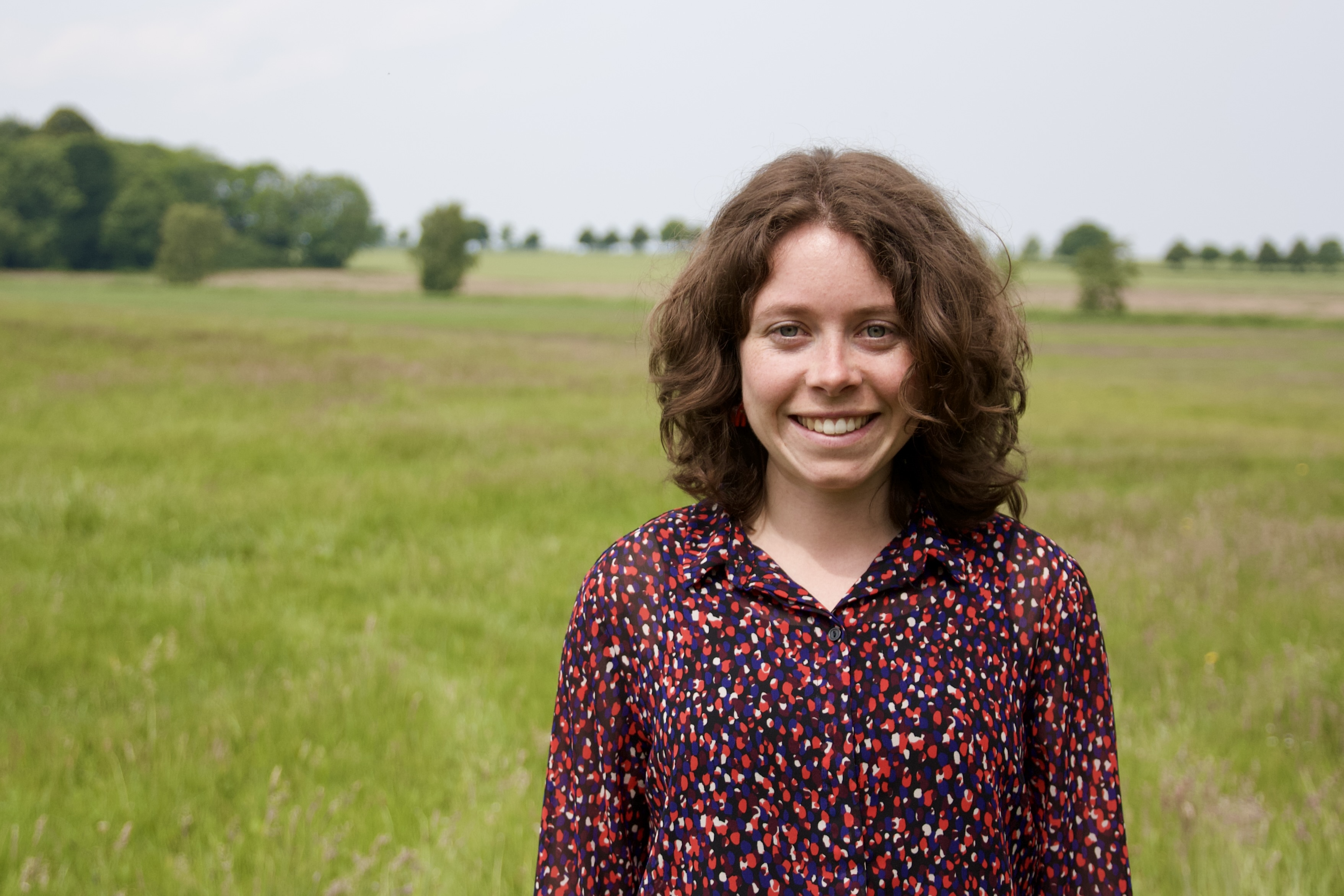
The Swedish island Öland has experienced extreme weather events over the past years, leading to low groundwater levels, recurring droughts, and water shortage. While there is agreement that these and similar sustainability challenges need to be addressed through collaborative efforts, water governance on the island remains siloed. To bring different actors together to jointly discuss the problem and different pathways forward, I initiated and facilitated a workshop series to ensure an inclusive, community-based approach to managing water in the landscape, for example through wetland restoration. By applying different tools such as photovoice or walking workshops, I supported actors in connecting their respective knowledge on climate change and resource governance.
In astronomy, numerical simulations bound our theory to observations. But what do these simulations represent, and how do we create them? For this ScientiFika, I will talk about cutting edge research done here at Stockholm University in the “Cosmology and AI group”, where we attempt to infer the starting point of our Universe in order to simulate a “digital twin” of the observed large-scale-structure and the galaxies that fill it. I will discuss how these kind of simulations go beyond the current state-of-the-art in pushing our understanding of how our Universe formed, and where we need to look to learn more
Today’s Scientifika Talk will be taking a slightly different spin on space and time than what you may be used to. Rather than looking out far up above the Earth and at the invisible natural forces that hold us together, we will look around at each other and back in time to better understand some other invisible forces, no less relevant to our everyday lives, and how these forces shaped society many centuries ago. We will be doing so by exploring the idea of peace. Peace was an enigmatic and omnipresent concept in the Middle Ages. Then, as today, it was used as a rhetorical device to condemn the use of violence by certain parties, while justifying its use by others. But while today we often understand the concept in relation to its antonym, war, in the Middle Ages it was more or less synonymous with the idea of law and order, or more specifically a “right” social order. In this talk, I will introduce some of the varying conceptions of peace in the Middle Ages, before zooming in to focus on how these conceptions, assuming a legislative form, became used to transform Nordic society in the High Middle Ages.
Different Room: Floor 5 @ NORDITA
Have you ever wondered if we’re truly alone in the Universe? That question has captivated me for years, as it has for countless others—philosophers, scientists, and other existentialists—though existentialists might just shrug and say, “Does it really matter?” The vastness of space tempts us to believe that somewhere, another Earth-like world must exist—perhaps even an Earth 2.0, teeming with life as we know it. In 1995, astronomers discovered the first exoplanet orbiting a star like our Sun, igniting an entirely new branch of astrophysics. Less than 30 years later, this field has exploded, mostly fueled by rapid technological advancements. Yet, as we push our instruments to the limits, it’s not just technology that challenges us—the very stars themselves are revealing unexpected obstacles… Join me for a journey through the fascinating history of exoplanet discovery, from the first breakthrough to the ambitious future observatories still on the horizon. Together, we’ll explore the challenges encountered along the way, and perhaps uncover a few mysteries yet to be solved.
How do electrons conspire to make emptiness interesting? The quantum Hall effect is a surprising phenomenon related to the conduction of electricity. In certain cases, the electrons of the quantum Hall system form a state of matter where particle-like holes emerge in the electron fluid. These holes can have charge and spin, just like electrons, quarks and other particles can. To begin with, I will give an introduction to the quantum Hall effect. We will try to develop an intuition for it and understand some of its surprises together. Then, we will see how these “hole objects” fit into the picture. With a bit of luck, we will even see some of these elusive “quasi-holes”! Throughout the talk, I will keep the formalism to a minimum, introducing the concepts we need as I go.
Schizophrenia (SCZ) and bipolar disorder (BD) are severe psychiatric disorders that result from the complex interplay between genetic and environmental risk factors. Shared genetic risk between SCZ and BD is well-established, yet the extent to which they share environmental risk factors remains unclear. A longstanding topic of debate has been the nature and extent of interactions between genetic and environmental risk factors. In this talk, I will summarise the genetic and environmental contributions to SCZ and BD and share some of our findings from investigations in the Swedish population.
The Higgs boson, discovered in 2012 by the ATLAS and CMS collaborations, is perhaps the most crucial piece in the puzzle of the Standard Model of particle physics. This theory, despite being extremely precise, cannot explain some of the biggest questions about our Universe. Several beyond Standard Model theories suggest the existence of additional Higgs bosons, which could for example explain the matter-antimatter asymmetry in the Universe or help provide a candidate for dark matter. In this seminar I will explain how we search for such new particles in the Large Hadron Collider. In particular, I will present the latest results from the ATLAS Collaboration on searches for an extended family of the Higgs boson in one of the most sensitive final states (with two photons and two b-jets).
Solving climate change is a monumental task for human civilization. Reducing our reliance on fossil fuels and reaching a net zero energy system might be harder than you think – and easier. Inspired by my academic and non-academic career, I will talk about why there might be room for optimism and discuss some of the techno-economic solutions on how we can switch to a more renewable world and what this new energy paradigm might look like.
Speaker 1: Kryštof Jasenský
Spintronics - harder, better, faster, stronger
What if, instead of their charge, we leveraged the electron’s spin for data storage and computation? This question is what brought to life the field of spintronics. We will talk about existing spintronic devices and novel approaches currently under investigation. Time permitting, we will delve into the topic of antiferromagnetic spintronics. We will (hopefully) see that antiferromagnetic materials are far more useful than their discoverer, Louis Néel, envisioned them to be.
Speaker 2: Gonçalo Gonçalves
Unlocking the Universe’s Secrets with AI and Cosmic Magnifying Glasses
Okay, so picture this: stellar explosions, cosmic magnifying glasses, machine learning, and a dash of detective work. We’re talking about using gravitationally lensed supernovae to decipher one of the universe’s deepest mysteries: how fast it’s expanding. I will show you how we simulate these rare objects, what they look like, and how they can be used to infer the cosmic expansion rate. When it comes to applying machine learning to any task, there are a plethora of ways to go about it. In this talk I plan on going over a few of them and discussing pros and cons associated with each. But I’m just a rookie, so this is where you come in! I will open up the discussion to hear your experience and intuition regarding machine learning applications. Hopefully this way we will all learn something new, and get one step closer to unlocking the Universe’s secrets.
Discussing the weather has somehow become a symbol of a topic to resort to when conversation runs dry. Which is a shame, because weather is so much more than just small talk - it’s integral to renewable energy production. In this talk, I aim to put weather conversations in a new light. As a data scientist at an energy-tech company, I will share insights and anecdotes from within the energy sector. How did Europe survive the energy crisis? And how can new AI-based weather models be used for renewables forecasting? Hopefully, this will give you some weather-related conversation starters that can follow or replace the usual “Cold outside today, isn’t it?”
Supernovae result from the explosive death of massive stars. If the progenitor star retained at least some of its outermost hydrogen layers before explosion, the spectra of the supernova will show hydrogen lines. These supernovae are classified as Type II. Through the spectral evolution of a Type II supernova, we can infer the structure of the progenitor star. The light curve, produced by the supernova’s brightness variation over time, helps us understand the energetics of the explosion. Typical theoretical models propose that Type II supernova light curves are powered by hydrogen recombination and heating from radioactive decay of Nickel-56. However, there exist some atypical Type II supernovae whose spectral and light curve characteristics can not be explained by such a model alone, suggesting the need for alternative power sources.
In this talk I will present Type II supernovae (SNe II) that show atypically bright light curves, classified as “LSNe II” and “SLSNe II”. I will explain why we keep adding letters at the beginning of the SN II name, and I will show which observables can help elucidate the physical mechanism that powers these events.
Meta-abstract: As I’m filling in this week’s spot on short notice, the talk’s title and content remain on a mental superposition between two states: a talk about emergence focussing both on spacetime emergence and the emergence of the classical world, and a talk about what is real from a scientific realist perspective. If we are lucky enough, the collapse of the talk’s mental wavefunction will happen due to a measurement on a different basis, and a superposition of both topics will be discussed! Whatever happens, the plan is to make our heads spin!
I will discuss the notion of symmetries in physics in a non-technical manner and how some are actual symmetries, and some are mere redundancies in our description. The central part of the talk will be about a simple financial toy model that demonstrates a symmetry physicists call “local gauge invariance.” This type of symmetry is ubiquitous in physics; e.g. it is found in both the standard model and general relativity. Intriguingly, the dynamics of this toy model is surprisingly determined by a physics equation famous enough to appear on T-shirts…
Humans are beginning to interact with robots in a multitude of different contexts, including the service industry (robot servers, last mile delivery drones), healthcare, and entertainment (e.g., Disney droids). These interactions span from inherently goal or task based to socially oriented. As such, people have different expectations and beliefs about how robots should behave during their interactions with humans. The field of human-robot interaction therefore focuses on understanding how features such as the robot’s appearance and behaviour influence people’s attitudes and behaviours towards these (social) robots.
Nonetheless, despite recent technological advances, robot failures remain inevitable. Robot failures in real-life, uncontrolled interactions are even more inevitable. In this talk, we will cover why robot failures occur, what happens when robots fail, and how we can recover from failure. Understanding our relationships with robots, especially in situations and contexts where things do not go as expected, in turn has the potential to better inform our own understanding of ourselves, leading to better human-human interactions, too.
Do you have burning questions about the world of academia? Are you unsure of how to approach job applications and wonder what academic life will look like a few years down the line? The good news is that others have been where you are before. At ScientiFika, we have a diverse crowd of bachelor, master, and PhD students, as well as postdocs. This provides a unique opportunity to ask each other questions about academic life and share experiences to help one another. We encourage everyone to join us this Friday with your questions for an informal group discussion.
You can ask questions anonymously at the event or submit your questions before the event, for both options use the form https://app.sli.do/event/9Fsq2sVAGSa7uBLkf1tomt (or slido.com with code 2568323), where you can also vote for the questions you like to discuss.
The ultimate dream of reductionists has always been to find a theoretical framework that unifies all theories. One framework that can accurately describe all forms of matter and interactions. By accident, particle physicists of the 1960s stumbled over a candidate for such a framework and christened it string theory. In the public perception, it rose to be the wunderkind of theoretical physics, promising to finally achieve the ultimate theory of everything and solve the problem of quantum gravity and whatever else you might have been worried about. Fast-forward 60 years; a lot of the initial excitement has faded, string theory turned out to really be a theory of anything rather than everything, and proponents are accused of being lost in math. In this talk I want to present an overview of what string theory truly promises, what it achieves, and where it fails. I will recount what happened during the superstring revolutions, ponder what to do with the swampland, and explain why string theory remains as the leading candidate for quantum gravity to this day.
Are you curious about the underlying physics of traffic flow, a swinging pendulum, population growth, and other time-evolving systems? Join ScientiFika this Friday for a concise introduction to the field of dynamical systems. The talk will highlight its fundamental concepts and focus on key issues like nonlinearity, scale separation, and high dimensionality. Through examples ranging from simple chaotic maps to more complex systems like turbulent flows, we will explore the core principles and address the significant challenges within the field. The aim is to offer an accessible yet thorough entry point for those new to dynamical systems, while outlining the open questions and challenges that propel the field forward.
When it comes to love, man and molecule are not that different. Hydrogen and CO are the two people in your class who were a perfect match for each other, but throughout all high school years they never got to the point of dating. In this talk, we explore alternative timelines where they received help from professional matchmakers - the heterogeneous transition metal catalysts - who employ different strategies to send the sparks flying between our lovesick molecules. Furthermore, we use operando x-ray photoelectron spectroscopy as a tool to spy on both the matchmakers and their clients as the action occurs. We will find that this kind of surveillance can teach us valuable lessons about the reaction mechanisms - the molecule’s path to love.
Core-collapse supernovae are generally observed after the massive star has been destroyed, with information about the progenitor star inferred indirectly from the appearance and evolution of the supernova. Over the last decade, researchers have identified energetic activity at the locations of supernova explosions in the years leading up to core collapse in historical archives. These events are typically attributed to the massive progenitor star undergoing some form of activity via currently unknown mechanisms.
One challenge when observing these precursor events is the uncertainty surrounding when or if the actual supernova explosion will occur. This uncertainty often makes us hesitant to allocate valuable telescope time.
In this talk, I will present a growing sample of objects that demonstrate that some massive stars exhibit variability weeks to months before their final supernova. Through this work, we may be able to obtain advance warning of an impending supernova, allowing for high-reward observations and, to some extent, the ability to predict the final death of a massive star.
We live in an exciting time for high-energy and fundamental physics broadly defined. Advances in particle physics and cosmology, theory and experiment, technology and computation, etc. have allowed us to piece together the most precise understanding of nature on the smallest and largest scales. At the same time, important open questions remain that will require further theoretical insights, and a wide range of large and small experiments to answer. Given the longer timescales and higher costs of these endeavors, the US high-energy physics community has been undertaking a community and prioritization study with global participation roughly every decade to plan for the future. In this broad talk, I will describe the outcome of the recent so-called Snowmass and P5 processes, the prioritized experiments and their scientific goals, and some lessons I learned from my involvement.
We will go on an imaginative exploration of an advanced alien race emerging from a subsurface ocean, who suddenly discover a new force, the force of gravity. With their superior understanding of nuclear and particle physics, they put their most brilliant scientists to work. Their experiments lead them to a set of fundamental properties characterizing the new force and an initial understanding akin to Newtonian gravity. We will follow several groups of alien scientists on their journey to describe the new phenomenon in terms of the theoretical framework familiar to them, culminating in the prediction of a new particle, the graviton, as the mediator of this force. This journey not only guides them to Einstein’s theory of general relativity but also nudges them beyond. Propelled by emerging theoretical hints, they start exploring theories with multiple different gravitons.
The systematic study of our oceans along the with first instrumental observations started around 150 years ago. To study changes that occurred before this, and to better understand the long-term functioning of the ocean, geological records such as ocean sediments are investigated. This field of research is called ‘paleoceanography’. In this talk, I will introduce some of the basic concepts, methods, and research questions that underlie paleoceanography. In particular, I will focus on patterns of ocean (and climate) variability of the past 2.5 million years – the time period when the growth and decay of large ice sheets dictated Earth’s climate. Finally, I will discuss some case studies that highlight the importance of warm ocean currents and their influence on the melting of ice in the Arctic.
After working as a postdoctoral researcher in supernova cosmology, Rahman Amandius switched to a career in industry. He is currently the head of machine learning and data science at Voi, a company that rents out electric scooters and bikes in more than 100 cities throughout Europe. Are you curious which skills are transferable from supernova explosions to electric scooters? What are the differences and similarities between working in academia and industry? And which algorithms lay behind the network of scooters and bikes that many of us use on a daily basis? Join us this Friday to ask Rahman all your questions about the transition from academia to industry!
I will discuss holography, the idea that gravitational theories can be described by lower-dimensional degrees of freedom. The most concrete example of this is the AdS/CFT correspondence, which uses ideas from string theory. I will explain how the correspondence works and how researchers have used it both to better understand quantum gravity and to investigate strongly coupled systems in particle and condensed matter physics, where traditional calculation techniques break down.
The question whether the universe is a black hole has been raised by various researchers, motivated in part by the fact that the Schwarzschild radius associated with the matter content of the universe is roughly equal to the radius of the observable universe. In this talk, I will review the arguments for and against the claim that the universe is a black hole. I will also discuss the arguments for the claim that black holes can spawn baby universes. The talk is based on a chapter for an upcoming popular science book about black holes.
In this scientific fika, we delve into the field of quantum magnonics, a cutting-edge direction poised to explore the hybrid quantum information platforms based on magnons, quantum of spin waves. I will explain concepts like magnons and discuss their properties. We will explore recent achievements and their potential to develop the magnonic platform, such as their robustness, tunability and lower power consumption, along with the rich physics underpinning them. A full-fledged quantum era may still be distant for most of our daily life, except of researchers/physicists, but there are quite a few intriguing facts to appreciate about how quantum magnonics is shaping the challenges of future quantum applications.
Ever wondered what happens to the brain during Alzheimer’s Disease? Or what we can actively do to prevent it and how medical research is tackling this problem?
In this Scientific Fika, we’ll navigate the basics of Alzheimer’s Disease (AD), the most common form of dementia affecting memory, thinking and behaviour. Symptoms eventually grow severe enough to interfere with daily tasks. AD research is split into three main branches: analysis of the molecular mechanism behind AD, developing new drugs, and searching for new biomarkers. We’ll explore why grasping the inner workings of AD is crucial for knowing what new drugs must target. And once we have an available treatment, it’s important to screen the population in the most effective and inexpensive way. I’ll also discuss results from my master’s thesis in which I investigate how cell’s organelles change their organization between mice with and without AD.
Join us this Friday if you’re curious to hear more about how research is fighting AD and what the newest developments in the field are!
Do you have burning questions about the world of academia? Are you unsure how to approach job applications and wonder what academic life will look like a few years down the line? Let’s ask the people who navigated this landscape successfully and obtained a permanent position! In this week’s Scientific Fika event, a panel of professors will answer your questions and talk about their personal experiences in academia. We are delighted to have Angela Adamo, Matt Hayes, Tim Linden, Florian Niedermann, and Magdalena Zych on the panel.
Conformal symmetry is one of the most powerful tools in physics, providing a means to perform numerous computations and investigate an extensive range of physical systems from ferromagnets to black holes. But what are exactly these conformal symmetries and how do they arise?
In this talk, starting from the statistical physics example of the Ising model, I will show how conformal symmetries can emerge. I will then explain more precisely what conformal invariance entails for a physical system and how it can lead to simpler computations. Finally, I will present examples of applications of conformal symmetries beyond statistical physics such as the renowned AdS/CFT correspondence.
The nature of dark energy is one of the great mysteries of our Universe. Unlike with dark matter, we run into problems when we use conventional particle physics intuition to reveal the microphysics of dark energy. In my talk, I will highlight two a priori unrelated aspects of dark energy model building: First, dark energy models are often very sensitive to unknown high-energy physics. This goes under the name of the cosmological constant problem and has plagued theorists for the better part of a century. Second, a recently proclaimed discrepancy in the predicted value of the expansion rate of the Universe today seems to indicate the presence of a new phase of dark energy in the early Universe. I will argue that both observations can serve as a guiding principle in our efforts to understand the fundamental nature of dark energy. In keeping with the informal character of the Scientific Fika I will also use the opportunity to take a personal look back on my path as an early career scientist.
Astronomy is in many ways unique among the sciences due to its largely observational nature. Astronomical data are collected inside and outside of the visual spectrum, and an astronomer’s job then becomes one of producing meaningful representations to represent the new knowledge that can be extracted from this data. In this presentation, we will look at Astronomy under this scope: social semiotics, which stands for the study of signs and how they are created and reproduced within particular social groups for meaning-making purposes. For the purposes of this talk, we will treat Astronomy representations (diagrams, images, equations) as objects placed in the space between people in order to achieve communication. Using this approach in Astronomy Education Research, we manage to uncover crucial disciplinary aspects of these representations and understand how to use them more effectively in Astronomy Teaching & Learning. Furthermore, we will look at some examples of how we apply this approach to specific astronomy representations: we will demonstrate how we can use this framework to better understand the particularities of the Hertzsprung-Russell diagram and what makes it difficult for students to interpret, we will look at how we use mathematics in astronomy for meaning making purposes and lastly, we will use the map of the Cosmic Microwave Background (CMB) radiation to uncover some aspects that Astronomy experts see in representations, without them being directly visible. This is a crucial part of the nature of expertise in any scientific discipline, and a fundamental goal for Astronomy teaching & learning: the question of how to introduce a newcomer (a student) to Astronomy becomes a question of how to make them see what an expert sees in Astronomy representations.
Speaker: Alex Brown
Einstein was (probably) wrong: looking beyond general relativity
The theory of gravity is one of the most important theories in modern physics. It governs everything from the oceans’ tides to the large scale structure of our universe. Since 1915, when Einstein revolutionised our understanding of gravity, we have used his theory of general relativity to underpin mountains of research. But what if Einstein wasn’t right? What if general relativity is wrong? How would we know, and what would we do? This talk is a brief introduction to gravity theories beyond general relativity. I will discuss the extremely successful theory of general relativity as well as its alternatives: what they are, why we have them, and how we can test them.
Speaker: Jacob Osman Hjortlund
Spooky Systematics and Known Unknowns: The Cosmological Impact of SNe Ia Progenitors
Type Ia supernovae (SNe Ia) have played a significant role in measuring the acceleration of the Universe’s expansion and the existence of dark energy. This is all made possible by the relatively uniform brightness of SNe Ia explosions, making it possible to use them as measures of cosmological distances. Although these events are instrumental in constraining cosmological parameters, we surprisingly enough have very little knowledge about the progenitor systems that lead to these explosions. Examples of such systems are star–white dwarf binaries and white dwarf–white dwarf binaries, the rates of which change over cosmological time. Can we be sure that such progenitor systems lead to exactly the same SNe Ia explosions? This known unknown may lead to systematic biases, impacting both current and future large-scale surveys aiming for percent-level precision constraints. In this talk, I will introduce you to the field of SNe Ia cosmology, including the current state-of-the-art results, issues and our proposed solution. I will present a novel two-population model of SNe Ia, that links cosmological measurements together with current work on SNe Ia progenitor systems. Using both simulations and the latest observations, we will explore what impact such unknown progenitor systems may have on cosmological constraints.
Do language and chemistry have something in common? As it turns out they do, and machines are excellent at picking up the semantics out of the strings encoding molecular structures. Those strings resemble sentences which follow particular grammatical construction rules. We capitalise on the enormous progress in artificial intelligence, with a particular focus on generative models. Our goal is to teach a machine chemical features of molecules and use its ability to generate new structures to find new molecules for our applications. As a concrete example, I will present a search for optimal crystalline molecules for light dark matter detection, as well as our exploratory search for bioactive molecules that we conduct with our industry partners.
Speaker: Kunal Deoskar
Navigating the Leap: From Physics to Data Science
This presentation will spotlight the applicable skills physicists can transfer to the data science sector of the Tech industry. We will delve into the functionality and relevance of various skills and tools valued in academia and how they relate to the needs of the industry. Additionally, we will discuss innovative applications and ongoing research surrounding Large Language Models. Furthermore, we will explore various roles within the data field, providing practical insights into essential skills and hiring practices.
Speakers: Soheb Mandhai, Kunal Deoskar, Nikki Arendse
Supporting Science with Art
In this short session (starting around 16:45), Soheb, Kunal and Nikki will show how to use different forms of artwork to support and convey the story of your science. We will talk about the process of creating art and discuss different target audiences. With our examples, such as creating comic books about your PhD thesis, using watercolour videos in your talks, and creating 3D animations to visualise your physical models, we hope to inspire a lively discussion about how science can be supported by art! We encourage you to also bring examples of your own artwork.
FysikShow is a collaborative outreach project from Stockholm University with the aim of raising interest in natural science and research. FysikShow, consisting of a team of 8 PhD students, comes to schools and participates in various science events. We think it is both important and fun to use experiments to understand physics. Therefore, we show experiments to students and work interactively with explanations of the physical background. The school’s slightly more formal physics language is thus brought closer to everyday life and the students’ own experiences. We believe this is important for the students’ curiosity and to show them joy in understanding their own surroundings. This Friday we will tell you more about FysikShow and show you some of our favourite experiments!
I will talk about Milky Way and Local Group dynamics, which is undergoing a revolution due to the ESA Gaia mission. Gaia is an astrometric space telescope which measures the positions and velocities of stars. Using this information, we can weigh our galaxy, uncover its history, and learn about dark matter.
Neutron stars are enigmatic objects, with a mass larger than our sun confined to a radius comparable to a small city while also harbouring some of the strongest magnetic fields in the Universe. Such extreme conditions make them the perfect laboratories to study relativistic gravity and the behaviour of ultra dense nuclear matter; conditions unachievable on Earth. In this talk, I will talk through the history of neutron stars, highlighting what we know (and how) and don’t know (and keen to find out) about them with a special focus on how they evolve and their links to the most explosive events in the Universe.
Physics is supposed to be about the study of “stuff” (ie, matter), but can we learn anything interesting from the absence of that stuff? Have you ever wondered what it means when we say that a vacuum is actually filled with “virtual” particles popping in and out of existence? Or what actually lies in the deep, dark spaces between galaxies that make up the majority of the Universe’s volume? In this talk, I will discuss vacuums and cosmic voids, and why both can tell us interesting things about physics and the Universe.
In this presentation, we will discuss the parallel development of two intriguing and contrasting theories: Modified Newtonian Dynamics (MOND) and Dark Matter (DM). We will cover the specifics of MOND’s departure from classical Newtonian physics and explore its roots, pivotal moments, and its most popular extensions. Then, we will talk about the properties of DM and the various pieces of evidence that propel the DM concept to the forefront of modern cosmology. Through my (un?)biased presentation, my goal is to bring forward a conversation about the MONDian theories and whether and how they fare in comparison to the more widely accepted cosmological standard model.
Decision making ranges in difficulty from the neighborhood of the arguably trivial to the province of the obnoxiously complicated. Of potential good news, those of us afflicted by its hardships may find solace that a mathematical framework can offer some aid: game theory. In this context, a game is defined as a mathematical modeling of strategic interactions and the decision-making these involve between a group of “players.” Game theory, very broadly, studies such interactions and provides a formalism to define optimal strategy based on a set of outcomes. Game theory has in turn affected and at times significantly influenced several areas such as economics, computer science, psychology and more. Although its abstract is a picture of formality, the talk itself will feature an informal overview of some key concepts in game theory, such as non-cooperative games and Nash equilibria, together with their historical development.
Cosmic rays are highly energetic particles that originate from astrophysical sources such as pulsars or supernovae. As they travel through space, they interact in various processes, such as magnetic fields and gas, which can cause them to produce antimatter. In addition to their astrophysical origins, cosmic rays can provide important clues about the nature of dark matter in our galaxy. If dark matter particles annihilate or decay, they can produce antimatter particles that would be detectable in cosmic-ray data. By studying these cosmic-ray signatures, we can learn more about the properties of dark matter and its role in the universe.
During my talk, I will provide a personal introduction to cosmic rays and dark matter, and showcase a few examples of how and where to search for the unique signatures of dark matter. I will also explain how we can use antiprotons and antideuteron to constrain the annihilation cross-section of dark matter in our galaxy.
Scientists played a crucial role in the pandemic. We were told to “listen to scientists” and “follow the science”. Politicians and policymakers consulted with expert advisors and claimed to simply be doing what the science supported. The problem is: experts often disagree. In Sweden this was particularly clear, since our pandemic policies were so different to our European neighbours. Expert disagreement raises a difficult question: how can we follow the science, if scientists disagree? These disagreements are natural: the pandemic was new and the science was evolving rapidly. But it also made things difficult for both the public and policymakers. In this talk, I explore the question of how experts should respond to these disagreements. I postulate a difference in how this response should go in the case of disagreements in the world of research, and disagreements when advising policymaking during a crisis.
It was recently said of/by artificial intelligence [AI], ” [it] flows like a boundless river, shaping and transforming the world with unrelenting vigor”.
It is clear that AI and machine learning are powerful tools, but how powerful? To what extent are they only tools? But more, when will we stop having a say in their say in the world’s future or our interpretation of the world?
This talk will be an account of my experience with learned machines, in and outside research. I’ll recount my introduction to the topic and my applications including to one of the biggest problems in physics. I will then broaden up and discuss wider applications and implications, to science, life and the future, particularly focusing on ChatGPT, with the hope of convincing you to get into the river before the torrent comes (and not become my (our?) parents!).
One of the easiest ways to get funding is betting on quantum computers. But what does that actually mean and when will they be ready? In our talk, we will present trapped ions as a quantum computing platform with a slight twist. Inspired by Rydberg, we excite our ions more than usual which gives us interesting features to play with. We will present the basic concepts of trapped Rydberg ion physics and ongoing projects in the group.
It seems intuitively true that science gives us ‘objective knowledge’ about the natural world. But why is that the case? And, relatedly, why do other disciplines, like astrology or homeopathy, fail to give us such ‘objective knowledge’? In other words, how do we demarcate science from pseudoscience? Popular philosophical answers in the past have focused on the application of a rigid scientific method, but there are various reasons why this approach is bound to fail. Instead, the debate has shifted to focusing on scientific objectivity–potentially as a social good. In this fika talk, I will review some of the classic arguments and views in the related debates on the demarcation problem between science and pseudoscience, and about scientific objectivity.
Gravitational-wave detectors now give us the ability to “hear” the last few orbits as two neutron stars (or black holes) merge. The music produced by these last few orbits hides a plethora of insight, such as how these binaries are formed and the lives and afterlives of massive stars. Similarly, for many mergers we can also “see” the aftermath across the electromagnetic spectrum. In this talk, I will discuss what we can learn from the observations of these compact object mergers individually in gravitational waves and in electromagnetic radiation, together, for events where we have observations with both, and holistically, as a population worth greater than the sum of its parts.
Spontaneous symmetry breaking is a core concept with applications widely span multiple fields such as high energy physics, cosmology and condensed matter physics. The idea is heavily implemented in the remarkable Landau-Ginzburg paradigm used to classify numerous phases of matter and their phase transitions according to the symmetries they represent/break. In this informal talk, I will introduce briefly such a paradigm and discuss a number of physical systems that depart from it. These include topologically ordered states such as fractional quantum Hall systems and quantum spin liquids in addition to other topological phases of matter which are a cornerstone of modern condensed matter physics.
Speaker: Nicolas Boulle
Quantum systems
What is a quantum system? It is not always obvious to define the notion of a system because it depends on what we take into account to be part of it. A quantum system is at least made of a state, a Hamiltonian with a given basis and a Hilbert space. The Hilbert space can be made of a lot of subspaces that one can « glue » together to get a total space for the whole system: this is the Hilbert space factorization. I am going to talk about how the Hilbert state can be factorized and why it is important to choose a good factorization depending on how you want your system to look like.
Speaker: David Stuhrmann
Introduction to Large Deviation Theory
What happens when you sum random variables? If you are interested in a very unlikely outcome, the so-called rare event, it is important to know the shape of the resulting probability distribution. Large Deviation Theory is a good framework because it looks at probabilities in a logarithmic scale. I will motivate this idea with an example of repeated coin flips. In the end, I show the connection to statistical physics and explain how entropy appears from Large Deviation Theory.
Large scale structures such as cosmic voids and galaxy clusters are a crucial window into cosmology and fundamental physics. Accurately estimating properties of cosmic structures such as their cluster mass and void size has historically been difficult, however, since the underlying dark matter distribution cannot be directly observed. Many of these challenges can be overcome, however, by using Field Level Inference with the Bayesian Origin Reconstruction from Galaxies (BORG) algorithm. This approach uses forward modelling to sample the posterior distribution of possible initial conditions, which can then be resimulated in order to study the properties of the dark matter distribution in the local Universe. In this talk, I discuss recent progress in using posterior resimulations to estimate the masses of galaxy clusters, and in using posterior simulations with inverted initial conditions to construct an antihalo void catalogue.
When your equations are too complicated, sometimes you have to just make up new ones. Einstein taught us that the speed of light is absolute, which means space and time should be joined in a single geometric object called spacetime. He also showed how gravity can be understood as the curvature of this geometry. However, in all but the most ideal situations, it’s extremely hard to solve Einstein’s equations for gravity. In this talk, I will motivate and introduce tools for interpolating between Einstein’s gravity and good old-fashioned Newtonian physics using ‘Newton-Cartan’ spacetime geometry. While some of these concepts have been known for a long time, they have recently been dusted off and modernized. This was motivated in part by new and exciting results in string theory and holography, where these methods can help us to understand previously-inaccessible corners of the complicated full theory, as I will briefly mention at the end of the talk.
In this talk, I will give a quick introduction to an aspect of numerical astronomy that has exploded over the last decade: cosmological simulations. I will discuss their many forms, e.g., N-body simulations, cosmological simulations, hydrodynamical simulations, isolated merger simulations, and constrained realisation simulations. Why do we need them and how do we interpret them? I will briefly overview their history, how to put a cosmological simulation together, and, importantly, what kind of things we should look out for when comparing against the various cosmological simulations out there in the community.
As an aside, numerical simulations can also be art! How to get numerical astronomy to the public has always been a difficult task. I will mention some outreach projects we have done with the simulations over the years, such as projection light shows, galaxy builders, and virtual reality.
Do you have burning questions about the world of academia? Are you unsure how to approach job applications and wonder what academic life will look like a few years down the line? Let’s ask the people who navigated this landscape successfully and obtained a permanent position! In this week’s Scientific Fika event, a panel of professors will answer your questions and talk about their personal experiences in academia. We are delighted to have Ariel Goobar, Sara Strandberg, Ragnhild Lunnan, Fawad Hassan, and Jens Jasche on the panel.
On August the first, 2022, the supernova team in Stockholm made an exciting discovery. With the Zwicky Transient Facility, we observed a supernova which was gravitationally lensed by a massive galaxy, resulting in four images of the same object. The supernova was baptised ‘SN Zwicky’ and at the time of release, it was the fourth ever observed multiply imaged supernova. Gravitationally lensed supernovae are incredibly rare and powerful: they can reveal more about high-redshift supernova physics, substructures in massive galaxies, and the expansion of the Universe. After the initial discovery of SN Zwicky, a thrilling time followed in which we coordinated some of the best telescopes in the world to fill in the missing puzzle pieces. As two of the team members, we will share the discovery story and new insights from SN Zwicky in Friday’s Scientific Fika.
Ice sheets are an active component of Earth’s climate system, influencing the atmospheric and ocean circulations, in the past and today. Because they are projected to lose a significant amount of their mass in the upcoming centuries, this input of freshwater to the global oceans will have serious consequences regarding sea-level rise, affecting a significant share of the World’s population. Ice sheet models can predict sea-level rise, but need to be evaluated against empirical data of past changes to be sure that they represent ice sheet processes accurately. Here we use large-scale, idealised, and regional-scale model setups to understand the main climate drivers behind changes in Dronning Maud Land (East Antarctica) for periods that were both warmer and colder than present. When evaluating high-resolution model results against empirical data, it becomes clear that just as numerical models use data to validate their results, the interpretation of in-situ datasets can be improved with the aid of numerical models. In short, the results presented here are a push towards closer collaboration between numerical modellers and field scientists, who should work in tandem at all stages, from experimental design and sampling planning to interpretation of results.
The worldwide population and the increased accessibility of disposable sanitary items boost the market even during pandemic times. About 20% of this market accounted for diapers and incontinence products. For example, only 1 child produces up to 1 ton of waste every year in diapers, representing 4% of the total household waste and the 3rd most common item encountered in landfills. Naturally, the amount of waste generated is higher considering all disposable products. Thus, the sanitary industry carries a large environmental footprint, especially since these products are single-use and comprise 70% non-biodegradable plastics. At the same, recent solutions relying on renewable resources to produce biobased plastics are also becoming an issue when it requires the exploitation of virgin resources (crops, trees, etc.). There are also ethical issues with using food-grade resources as material building blocks. Science is taking a new direction to comply with sustainability and must now consider the entire value chain of a product: from raw materials to new waste. In this regard, the agro-food industry is important in finding sustainable materials for the disposable sanitary sector. The agro-food industry produces tons of waste daily that cannot be used as food or feed. At this point, our utmost goal is to create safe, biodegradable materials that can eventually be used as absorbents in sanitary items. The challenging task is to find a solution that is not degrading into microplastics and can be produced using regular polymer technologies and with industrial waste. The recent advances in finding solutions that fulfill the most sustainable criteria from cradle-to-cradle approaches will be presented, including future perspectives and possibilities.
Why can we not change the past? Why do things change only towards the future? What is change? And really, what is time? These questions have been haunting us since before the rise of civilization. They have taken the form of different myths, incorporated into religious views, and nowadays are imprinted in the hardest problems of our scientific theories. A better understanding of the nature of time is likely to play a major role in the conceptual development of a theory of Quantum Gravity as well as refining our models of Cosmology, possibly helping us to comprehend what the Big Bang really was. So, take some time off and come wonder together on the nature of time!!
The physical meaning, or interpretation, of the formalism of quantum physics is still debated a century after its conception. I review some of these interpretations, and how they address the measurement problem and Bell’s theorem. I argue that non-uniqueness of interpretations is common also in classical physics. What’s then so special about the interpretations of quantum mechanics? Come to the scientific fika to find out and discuss!
How well can we predict the future? Prior to the quantum mechanical revolution, the universe was believed to be deterministic and that if we could know all the initial properties of a system, the future, just like the past, would be certain. Quantum mechanics has given us insights about the unpredictability of events at an atomic scale. However, even at the macroscopic scale, nonlinear deterministic systems are unpredictable as any tiny change in the initial condition can lead to different final states – which is now known as the chaos theory. In this talk, I take you on a tour of this branch of mathematics and physics. A prior knowledge of the field is not required. I shall start by discussing the ubiquity of chaotic systems, starting from dripping faucet to boiling water. This will be followed by a brief discussion on the universal properties of such systems. Finally I will discuss how one can utilize the concept of chaos theory for practical purposes such as defibrillation of the heart and blood diagnosis.
In 2014, protesters from the indigenous people of Hawai’i blocked the groundbreaking ceremony for the Thirty Meter Telescope on Mauna Kea. The conflict highlighted how astronomy has a colonial dimension that is still present today. In this talk I will discuss the colonial history of astronomy, as well as current conflicts. After the talk, I invite everyone to have a joint discussion around the question: Does our knowledge of the universe come with a social and moral cost?
Renormalization is a collection of techniques used to study a system at different length scales and it can seem quite complicated. It is very important in both quantum field theory and condensed matter, for example in the study of the standard model. In this talk I will focus on renormalization as it is used in perturbative quantum field theory, where it is used to get rid of inconvenient infinities, and explain how it is performed by using a simple mathematical example (no complicated QFT equations) and the very basics of Feynman diagrams.
Do you have burning questions about the world of academia? Are you unsure of how to approach job applications and wonder what academic life will look like a few years down the line? The good news is that others have been where you are before. At Scientific Fika, we have a diverse crowd of bachelor, master, and PhD students, as well as postdocs. This provides a unique opportunity to ask each other questions about academic life and share experiences to help one another. We encourage everyone to join us this Friday with your questions, or already send them in by replying to this email.
The Hubble tension is a disagreement between measured values of the rate of expansion of the local universe and the values inferred from early universe physics, potentially a sign of new cosmological physics. The SH0ES collaboration measures the local expansion through a “distance ladder” based on stellar distances and geometry. As the SH0ES value is the most precise direct measurement, the robustness of the SH0ES distance ladder is a key question for modern cosmology. In my talk, I will discuss my work to demonstrate the robustness of the SH0ES measurement.
What scares you the most about your research? Do you worry about all the painful and terrible ways our Universe can end? Or about monstrous black holes, violent and too nearby explosions, and ghostly galaxies? This Friday Steve, Nushkia, Stephen and I will talk about what keeps us up at night (but don’t worry, we’ll keep it fun and won’t mention job applications).
Olbers’ paradox asks: Why is the sky dark?
But we can also ask: Why is the sky reionised?
During the Epoch of Reionisation, the first stars and galaxies were hard at work changing the phase space of the Universe: from neutral to ionised. But how do these sources of light (ionising radiation) perceive each other, and what lies betwixt and between them? In this talk, I will discuss the Epoch of Reionisation in the context of Olbers’ paradox and my own work and hopefully entertain you along the way!
Primordial black holes are black holes that might have formed in the early Universe. Their masses potentially span a range from as low as the Planck scale up to many orders of magnitude above the solar mass. This, in particular, includes black holes with mass and spin comparable to those discovered by LIGO/Virgo. These may well be primordial in nature, which could also be true for certain confirmed microlensing events in the planetary-mass range as well as for the seeds for the super-massive black holes in galactic centres. After a general introduction to primordial black holes, I will discuss observational hints for their existence on multiple scales. I will highlight one particular PBH formation mechanism, which we recently developed, and which is not plagued by exponential fine-tuning like most other scenarios. Here, primordial black hole formation is induced by confinement of heavy quarks. I will discuss phenomenological features of this new mechanism. If time permits, I will discuss an entirely new property of black holes which we recently discovered – vorticity.
Nuclear technology is undoubtedly one of the most important sources of base-load electricity generation, contributing approximately 11.2% to global electricity production. According to the International Atomic Energy Agency (IAEA), nuclear power is expected to play an increasingly important role as a source of electricity production around the world, in particular in Asia and the Pacific Rim, since demand for electricity is expected to rise significantly in these regions in the coming years. Further, it is anticipated that nuclear power reactors in the future will not be as large as they are today, with more than 1,000 MW of capacity, allowing for the introduction of small modular reactors (SMRs) with a maximum capacity of 300 MWe, which can be constructed in factories and transported to various sites by truck, train, or ship. The SMR alternatives are expected to address issues such as safety, non-proliferation, waste management, public opinion, social license, and economic competitiveness.
Wait what? We still haven’t figured out how to measure the size of a galaxy? Come for fika and I’ll tell you a story about how the development of imaging in astronomy, from the use of photographic plates in the 1930s to current CCD imaging, impacted the definition and measurement of galaxy size. You’ll get to view some of the oldest and newest deep images of galaxies and learn about a new physically motivated galaxy size definition that challenges our current understanding of how galaxies evolve. Excitingly, the new definition of size can be adopted in upcoming deep, wide imaging surveys such as Rubin Observatory’s LSST. So get ready folks, this stuff might show up in large scale catalogues of the future and then you’ll be able to tell others where it came from!
As the age of WIMP-scale dark matter (DM) draws to a close thanks to the ever-increasing sensitivity of direct detection experiments, the majority of DM parameter space outside of the weak scale remains to be explored. Sub-GeV DM can excite electronic transitions in a variety of molecular and nano-scale systems which have sub-eV scale thresholds. Furthermore, non-adiabatic couplings may produce visible signals in molecules following nuclear recoils. Here, I will discuss the importance of molecular and mesoscopic systems as new directions in the direct detection of dark matter, focusing on the use of quantum dots (QDs) and organic crystals as detector targets. I will show that QDs present a particularly interesting target with inherently low-background signals and low-cost scalability. Finally, I will present the molecular Migdal effect as a new directional method to detect DM nuclear recoils using molecular systems.
Or is it? Metastable states are pervasive in our world, they are close to equilibrium, but not quite. Depending on the evaluated system, they might slip into equilibrium in the blink of an eye or they might stay in this semi-equilibrated state for years and years. The latter potentially fooling us into believing that we are looking at the final state. Whilst some might argue that there is “no point” in studying them as they are not in equilibrium, it is evident simply by the ubiquitous use of diamonds both in jewellery and science that there is value in them. Throughout my PhD and postdoc, I have been studying different metastable phases, so come join me in my talk where I will share my research on at least one of these wonky states.
